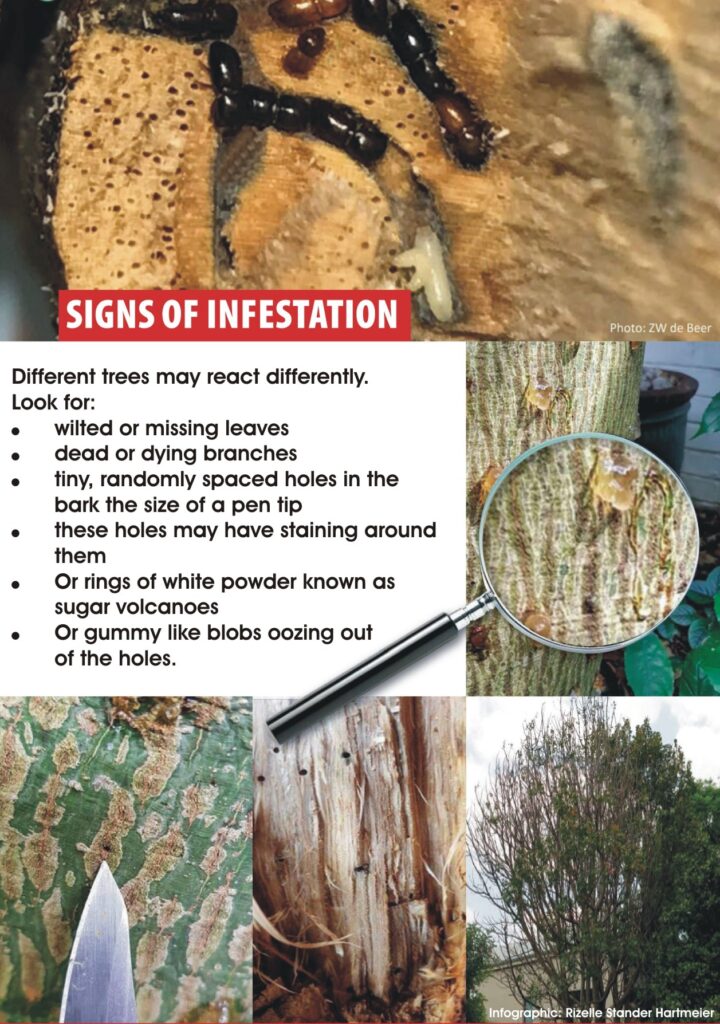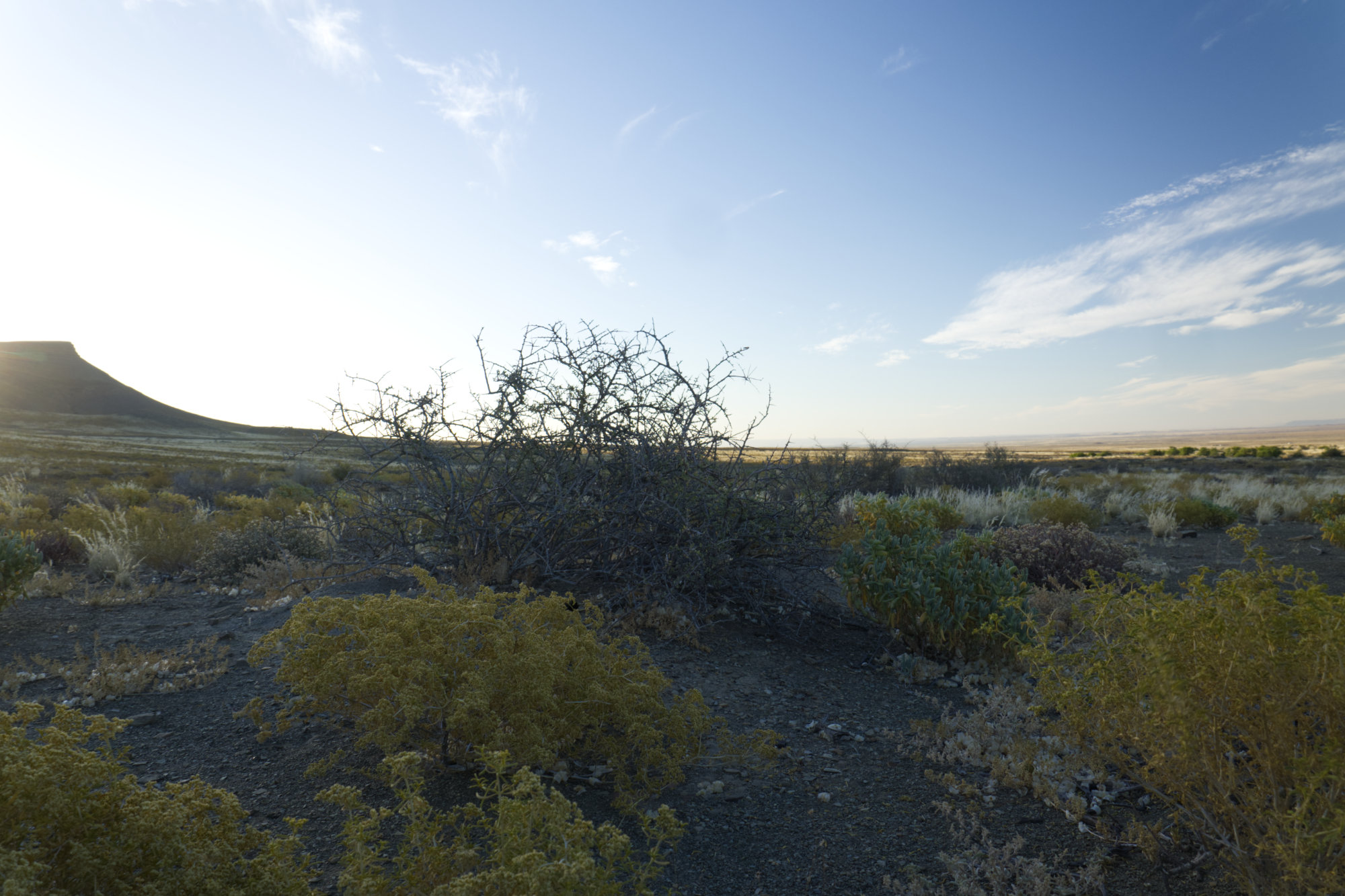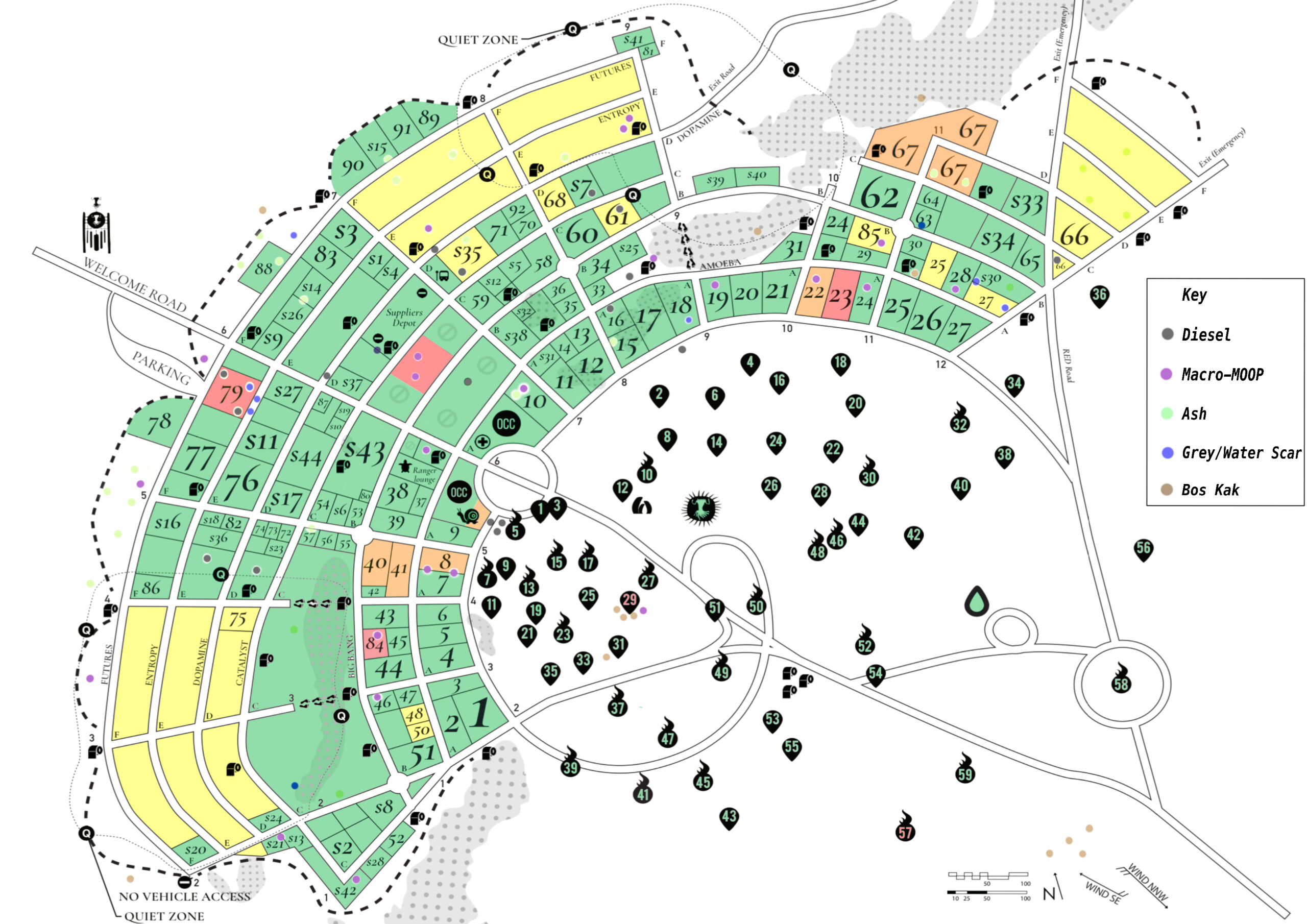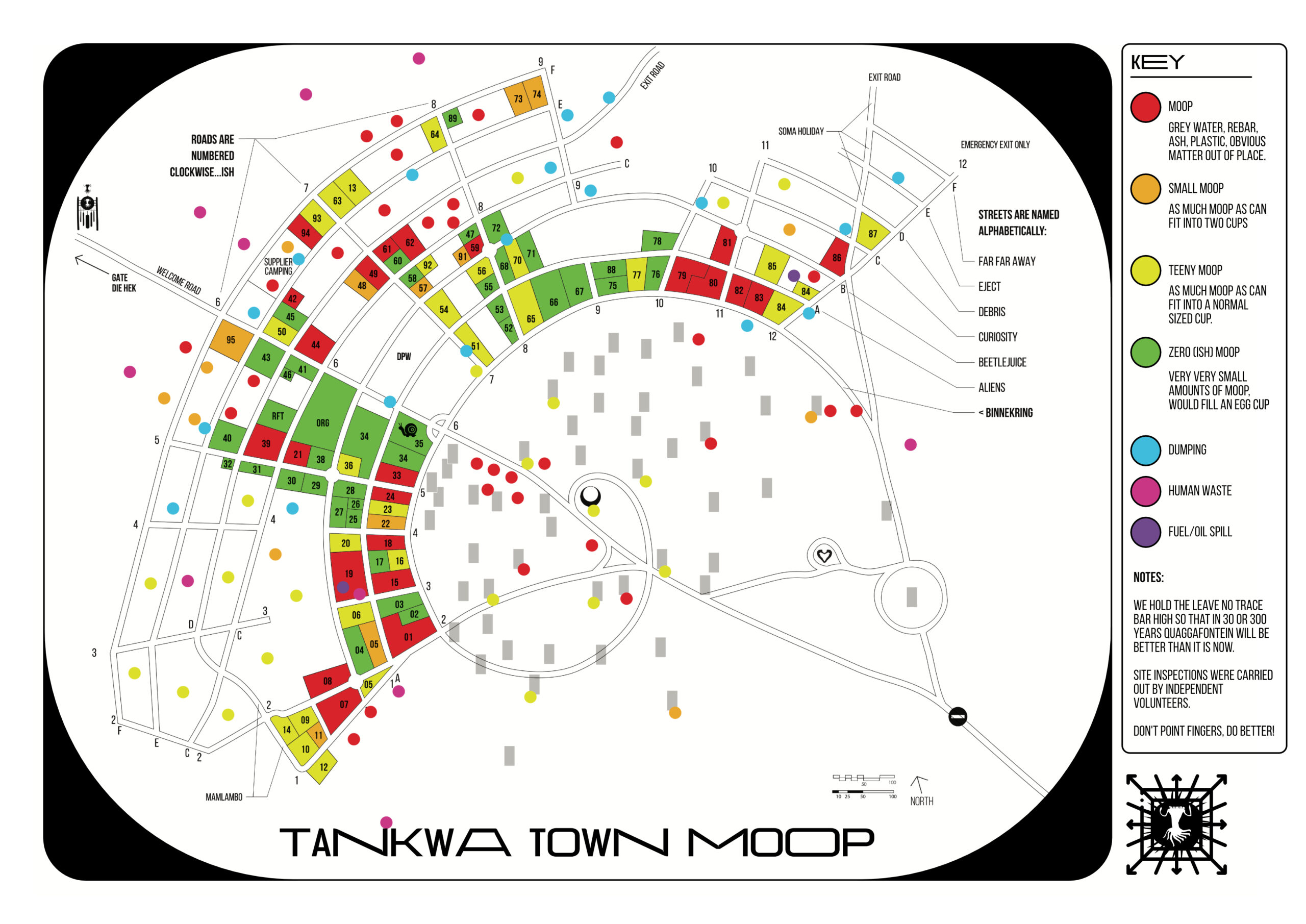Important information about fire/braaiwood at AfrikaBurn.
The polyphagous shot hole borer (PSHB) beetle is a recent arrival in South Africa. Together with its fungal symbiont, Fusarium euwallaceae, it can rapidly kill highly susceptible host plants and trees. It can also be easily spread via firewood … the same firewood that you might be thinking of bringing to AfrikaBurn.
AfrikaBurn is a net gainer of wood, increasing the risk of cross-contamination, additionally Quaggafontein is a private Nature Reserve and is located next to a National Park. Please read the below carefully to ensure you are complying with regulations and preventing the spread of harmful pests.
Key points:
All firewood brought to Afrikaburn must be used on-site and cannot leave the site. Treat all firewood bought to Afrikaburn as a donation.
Only local firewood is allowed. No firewood may be brought from other provinces.
Firewood purchased for Afrikaburn should be donated to Collexodus, burnt, or solarized.
Charcoal and/or eco-logs are acceptable alternatives to firewood.
All wood must be inspected for signs of the Shot Hole Borer (PSHB) before bringing it to Tankwa.
Treated wood is safe to use but not for braaing.
Leave No Trace principles apply. Dispose of all wood and braai materials responsibly. No dumping!
Infestations have been found at public spaces due to firewood and packaging shavings.
Please report infestations to duty Site Manager or the nearest ranger immediately.

Shot Hole Borer Beetle: Risks and Precautions.
The PSHB is a highly destructive beetle that poses a serious threat to South African trees. It is crucial to take precautions to prevent its spread.
- Local firewood is preferred.
- Inspect all wood for signs of PSHB infestation before bringing it to Tankwa. These signs include small, round holes (about the size of a pen tip) and sawdust around the holes.
- Leave firewood in sealed bags until use.
- Solarization: Use solar power heat to control pests.
When returning from Afrikaburn with wood or Moop:
- Place wood in direct sunlight.
- Cover completely with a tarp, tucking the edges in to contain heat, moisture, and beetles.
- After 6-8 weeks, the wood is safe from beetles and pathogens.
- Treat wood with solarization if returning with unused wood or Moop. This involves placing the wood in direct sunlight under a sealed tarp for 6-8 weeks to kill any PSHB larvae.
Additional Resources:
Fabinet – PSHB Research: https://www.fabinet.up.ac.za/index.php/research/7
Afrikaburn Bulletin: https://www.afrikaburn.org/
Collexodus – Gifting Beyond Tankwa Town: https://quaggapedia.afrikaburn.com/index.php?title=WTF
By following these guidelines, you can help to protect South Africa’s trees and ensure a safe and enjoyable experience for everyone at Afrikaburn.
Need more information and wood advice? email kevin@afrikaburn.com





One Response
I’d have thought Burners would respond positively to a –
“Keep TankwaTown and Tankwa vegetation safe, and support local beetle-free wood providers at the same time. Please pre-order bags of local wood, which you then pick up and pay for from local supplier/s at the gate. Burn staff will ensure a fair and reasonable price from the supplier/s. Email …… with orders or queries. Many thanks – helping AB, helping ourselves and each other, helping Tankwa vegetation and Tankwa trade. A GREAT CREATE. THANK YOU.”